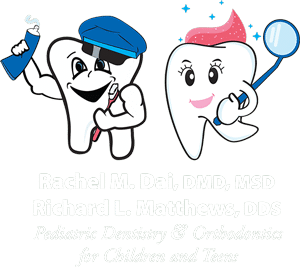Fascination About Legacy Orthodontics
Fascination About Legacy Orthodontics
Blog Article
What Does Legacy Orthodontics Do?
Table of ContentsSome Known Questions About Legacy Orthodontics.Some Of Legacy OrthodonticsSome Ideas on Legacy Orthodontics You Should KnowSome Known Details About Legacy Orthodontics The Of Legacy Orthodontics
In enhancement, we offer adjustable therapy schedules, adaptable repayment choices and an enjoyable, delightful experience.An orthodontist is a dental expert trained to diagnose, prevent, and treat teeth and jaw abnormalities. Orthodontists work with people of all ages, from children to grownups.
Malocclusion, or misaligned teeth, can cause oral concerns, consisting of dental cavity, gum illness, and hard or uncomfortable eating. Yet not every person is birthed with straight teeth. If you have a negative bite or huge spaces between your teeth, you may desire to speak with a dental expert focusing on orthodontic treatment.
The 8-Minute Rule for Legacy Orthodontics
( Picture Credit History: DigitalVision/Getty Images) Orthodontists make use of fixed and removable oral tools, like dental braces, retainers, and bands, to transform the setting of teeth in your mouth. Orthodontic therapy is for oral abnormalities, consisting of: Jagged teethBite troubles, like an overbite or an underbiteCrowded teeth or teeth that are also far apartJaw misalignmentThe goal of orthodontic therapy is to boost your bite.
While you might assume of orthodontists as generally for kids or teens who need dental braces, they can fix dental issues at any age. Orthodontists go to university, oral college, and orthodontic institution.
All orthodontists are dental practitioners, yet not all dental practitioners are orthodontists. Orthodontic residency programs use intensive, concentrated instruction for oral specialists. They focus on two locations: Just how to correctly and securely relocate teeth Just how to effectively lead growth in the teeth, jaw, and faceOnce an orthodontist has finished training, they have the option to become board accredited.
The smart Trick of Legacy Orthodontics That Nobody is Discussing
Misalignment, or malocclusion, is the most typical factor people see an orthodontist. It is hereditary and is the outcome of size distinctions between the upper and reduced jaw or in between the jaw and teeth. Malocclusion results in tooth overcrowding, an irregular jaw, or irregular bite patterns. Malocclusion is normally treated with: Your orthodontist connects steel, ceramic, or plastic square bonds to your teeth.
If you have only minor malocclusion, you may have the ability to utilize clear braces, called aligners, rather than traditional dental braces (https://www.cybo.com/US-biz/legacy-orthodontics_2w). Some individuals require a headwear to help relocate teeth into line with stress from outside the mouth. After braces or aligners, you'll require to use a retainer. A retainer is a custom-made tool that keeps your teeth in position.
They can develop added area in the mouth without having to pull teeth. Orthodontists use cables, surgical screws, or plates to sustain your jaw bone.
You may need to see an orthodontist if you have: Crowding or not sufficient space for all of your teethOverbite, when your upper teeth come over your base teethUnderbite, when your base teeth are too much forwardSpacing or concerns with gapsCrossbite, which is when your upper teeth fit behind your bottom teeth when your mouth is closedOpen bite or a vertical void in between your front bottom and upper teethMisplaced midline, when the center of your bottom and upper click now teeth do not align Remedying an oral malocclusion can: Make biting, chewing, and talking easierImprove the balance of our face and your total appearanceEase pain from temporomandibular joint disordersSeparate your teeth and make them simpler to clean, assisting stop dental cavity or tooth cavities It's typically a dental expert that initially notices misaligned teeth during a regular exam.
Unknown Facts About Legacy Orthodontics

Throughout your first orthodontic assessment, you'll likely have: An oral examPhotos taken of your face and smileDental X-raysPanoramic (360 level) X-rays of your face and headImpressions to develop mold and mildews of your teethThese tests will aid your orthodontist know how to wage your treatment. braces. An orthodontist is a dental practitioner who's had training to treat your teeth and jaw
Orthodontists might perform surgical treatment, exams,X-rays,and more to aid you acquire a much more comfortable, healthier smile. An orthodontist is focused on your bite, so something like a cracked tooth would certainly be taken care of by a dental professional. Orthodontists are dental experts yet not all dental experts are orthodontists. Orthodontists are concentrated on your bite, or the method your teeth fit together, and the straightness of your teeth.
Ever before asked yourself just how celebrities constantly appear to have flawlessly aligned teeth? Orthodontists are dental professionals who focus on correcting irregularities in the teeth and jaws.
The Only Guide for Legacy Orthodontics

, orthodontists have a diverse toolkit at their disposal. These reliable dental braces use a system of brackets adhered to the teeth and connected by wires.
These detachable trays are personalized to gradually shift the teeth's setting. In situations of narrow jaws, palatal expanders can be utilized to create space for correct tooth alignment.
Report this page